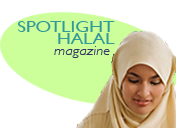 HAWWAM (Insect) HAWWAM (Insect) | |
| Shellac, used as a coating on aspirin and candies alike, is made from crushed insect cocoons. |
WHAT IS IT?
Shellac is a resinous compound secreted by the female lac bug (also known as: kerria lacca, laccifer lacca, carteria lacca and tachardia lacca) to form its cocoon. Shellac is used as a coating on medicines and candies.
Shellac ranges in color from very light blond to very dark brown, with all shades of brown and yellow and orange and red in between. The color is influenced by the sap of the tree the lac bug is living on, as well as the time of harvest.
Because it is contains crushed insects, another name for shellac is beetlejuice. However, because of the negative connotation associated with these names, on drug and nutritional supplement (vitamin) product labeling, shellac may be generically referred to as either enteric coating, pharmaceutical glaze, confectioner's glaze, resinous glaze, pure food glaze or natural glaze. In the European Union, shellac is known by the E Number E904.
HOW IS IT MADE?
Shellac is scraped from the bark of the trees where the female lac bug deposits it to provide a sticky hold on the trunk. In the process of harvesting shellac, the insect may be crushed into the shellac resin.
Raw shellac, which contains bark shavings and lac bug parts, is heated over a fire causing it to liquify. The thick sticky shellac is then dried into flat sheets, broken up into flakes, bagged and sold. Flakes are dissolved in denaturedalcohol to make liquid shellac.
It takes about 100,000 lac bugs to make 1 lb. of shellac flakes.
-- Try my recipe for Winning Syrian Tabouleh. --
 Join our Group on Facebook. Join our Group on Facebook. |
HOW IS IT MADE?
Shellac is scraped from the bark of the trees where the female lac bug deposits it to provide a sticky hold on the trunk. In the process of harvesting shellac, the insect may be crushed into the shellac resin.
Raw shellac, which contains bark shavings and lac bug parts, is heated over a fire causing it to liquify. The thick sticky shellac is then dried into flat sheets, broken up into flakes, bagged and sold. Flakes are dissolved in denaturedalcohol to make liquid shellac.
It takes about 100,000 lac bugs to make 1 lb. of shellac flakes.
-- Try my recipe for Winning Syrian Tabouleh. --
IN WHAT PRODUCTS IS SHELLAC FOUND?
Although commonly thought of as a wood stain and protectant, shellac is also used as a glazing agent on pills and candies. Glazing agents are food additives that provide a shiny appearance and protective coating to foods guarding against unwanted changes to color, smell, or appearance.
Shellac can be found in Skittles,* Altoids and even some varieties of Godiva chocolate bars. Shellac is sometimes used to replace the natural wax on apples which is removed during the cleaning process. In the pharmaceutical industry, shellac is used as an enteric coating on time-release medications, allowing the medicine to be absorbed in the intestinal tract, instead of in the stomach. It is used on safety coated aspirin products to prevent stomach irritation.
WARNING LEVEL: HIGHMany of us don’t give it a second thought when we buy medicine for ourselves or for our children. A recent trip to the pharmacy drove home what a minefield the pharmacy is for the Muslim consumer. While shopping for supplements, we found that out of 30 products we found only ONE that neither contained alcohol (ethanol, ethyl alcohol), shellac nor gelatin.
SPOTLIGHT RECOMMENDS
Read the Inactive Ingredients panel on drug and nutritional supplement product packaging, where the FDA requires shellac, alcohol and gelatin to be listed. Instead, choose medications and vitamin supplements made with the following vegetarian ingredients:
- Carnauba Wax, a natural wax coating derived from the leaves of the carnauba palm tree of Brazil.
- Cellulose-derived pharmaceutical coatings such as ethyl cellulose (E462), hypromellose (INN), and hydroxypropyl methylcellulose (HPMC, E464), all derived from the cell walls of green plants.
- Vegetarian pharmaceutical thickeners and binders such as: methyl cellulose (or methylcellulose); hydroxypropyl cellulose (HPC, E463);carboxymethyl cellulose (CMC, E466); cellulose acetate; microcrystalline cellulose (E460i), and powdered cellulose (E460ii).
 |
SPOTLIGHT HALAL rates shellac as HAWWAM (هوام). Hawwam is an Arabic word collectively referring to vermin — insects, rodent, reptiles, snails, frogs, worms, spiders and other crawling, slithering animals — the consumption of which Islamic Law forbids. Mold, fungus, bacteria and yeast are not considered hawwam.
At SPOTLIGHT HALAL, our Guiding Principle is to provide the diverse Muslim communities living in Western countries with practical information about the wide range of food choices they face on a daily basis, but from an Islamic perspective. We don’t say a food is haram or halal; we say: "This food is made with alcohol and pork," or, "That food normally contains chicken." Whether or not you observe zabihah, our flexible and informative approach allows you to make informed decisions on what to buy and eat.
NOTES:
** [Found on Skittles® sold in the U.K. Those in the U.S. do not contain shellac, but do contain gelatin. In both countries, certain flavors contain the red food coloring cochineal (carmine, E120), derived from the crushed shells of the insect of the same name.]



No comments:
Post a Comment